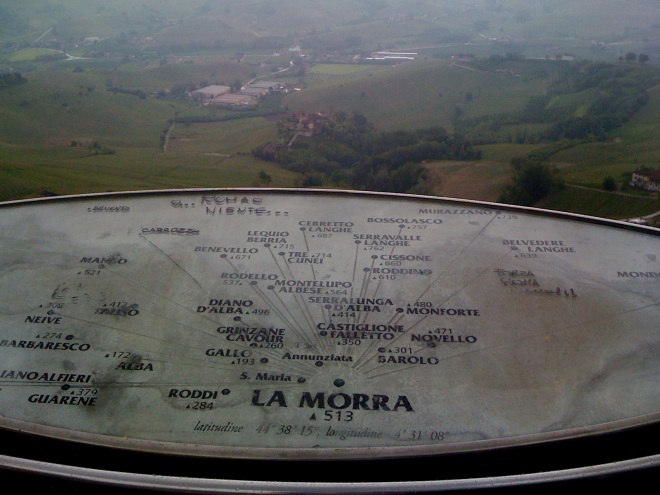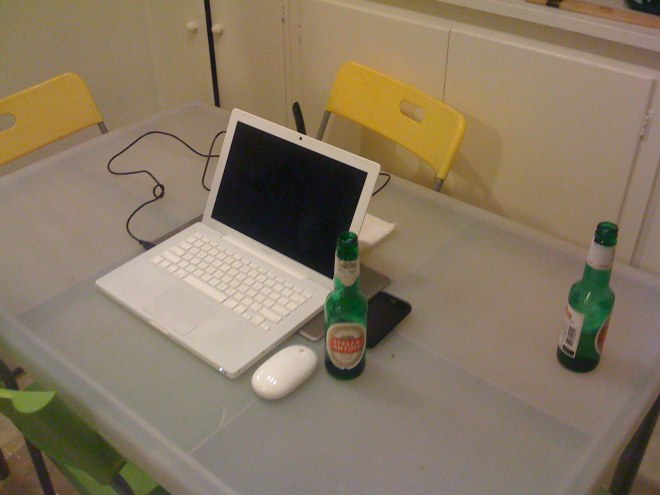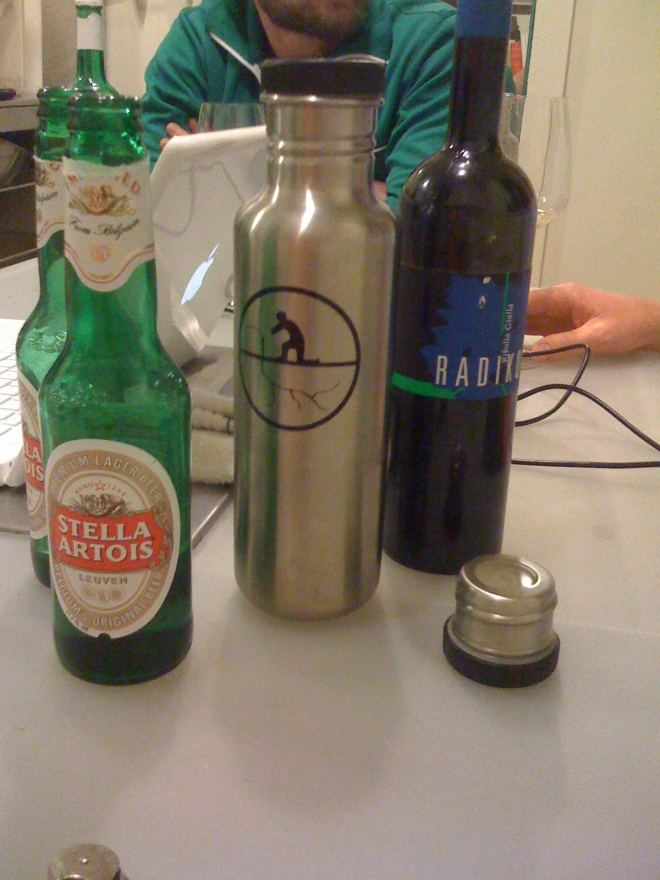
Above: Which way Barolo? A signpost at an overlook in La Morra showing the distance to neighboring communes.
So, do consumers even like Barolo? It’s a sad question to ask if you’re a nebbiolo obsessive, but I think there’s some truth to it. Outside of the wine trade, it seems like most people just don’t respond to nebbiolo the way they do to, say, pinot noir or even sangiovese. Whether that’s a good thing or bad thing for nebbiolo is an open question; but it most certainly has implications for producers in Barolo and Barbaresco.
I recently wrote an article about the current state of Barolo for the San Francisco Chronicle (you can read it here). And while it seems that producers in the region are moving beyond the (frankly tired) debate of traditional vs. modern when it comes to the identity of Barolo, there’s arguably an even bigger step necessary for the nebbiolo heartland: connecting with the people who actually enjoy their wines.
By enjoy, I don’t necessarily mean covet or collect, but rather the appreciation of Barolo (or Barbaresco) for what it is instead of as some sort of trophy. Sadly, the wines won’t ever be cheap but neither should the pricing continue to rise to levels where (most) wines are unattainable.
It’s unlikely that Barolo will ever develop an international high-end market (complete with knock-offs) equivalent to what Bordeaux has going on, and aside from a few rare bottles, Barolo winemakers aren’t anywhere close to the status enjoyed by their counterparts in Burgundy — a frequent comparison.
Happily, two recent trends suggest that there’s bright news for nebbiolo-lovers. First up, the current vintage in the market, 2006, seems to favor producers with a classical bent meaning that what’s in the bottle is an honest representation of the region’s terroir.
And perhaps even better news: after years of lavishing their attention on riserva-level bottlings or numerous single-vineyard ‘cru’ wines, winemakers in the region are turning a serious eye to their blended base wines, those labeled as Barolo, and often sourced from multiple communes. When I joined the Chronicle’s tasting panel for an overview of the 2006 vintage, we found several wines from this category in the $30- $40 range that showed the clarity and depth I love to see in nebbiolo. Good news indeed! You can read the results of that tasting here.















